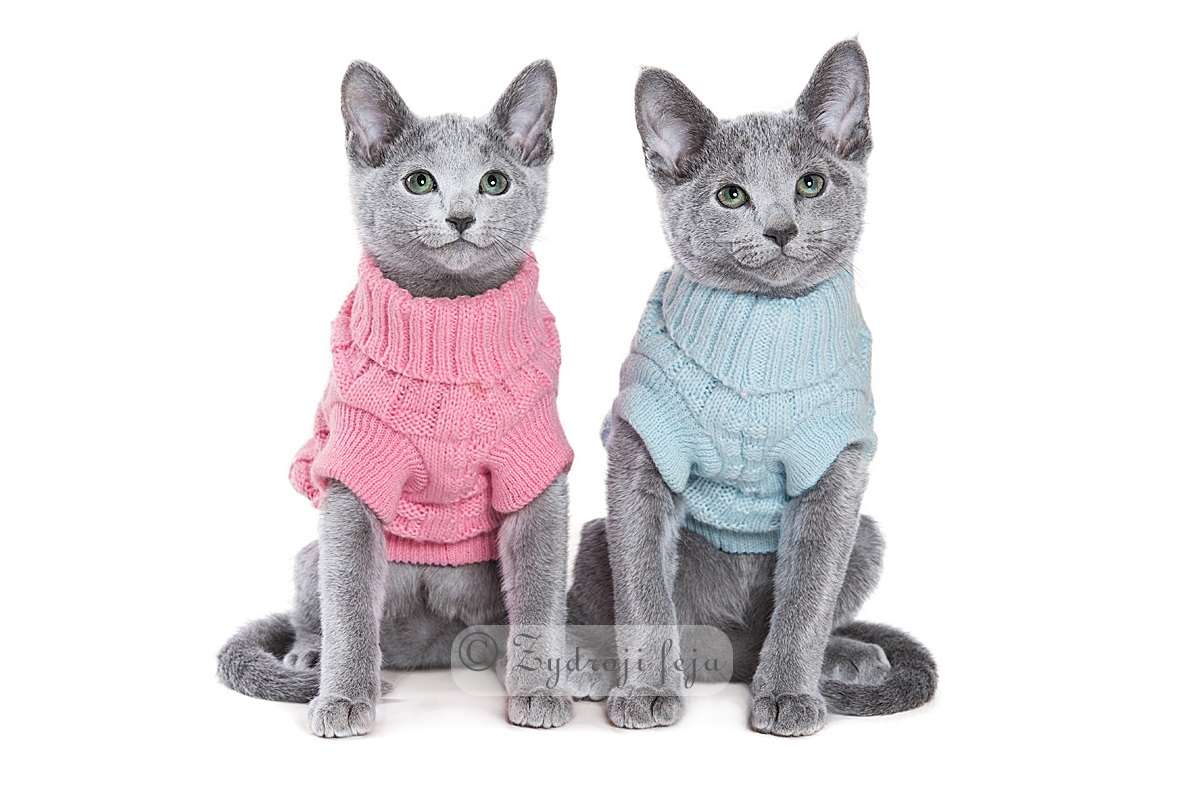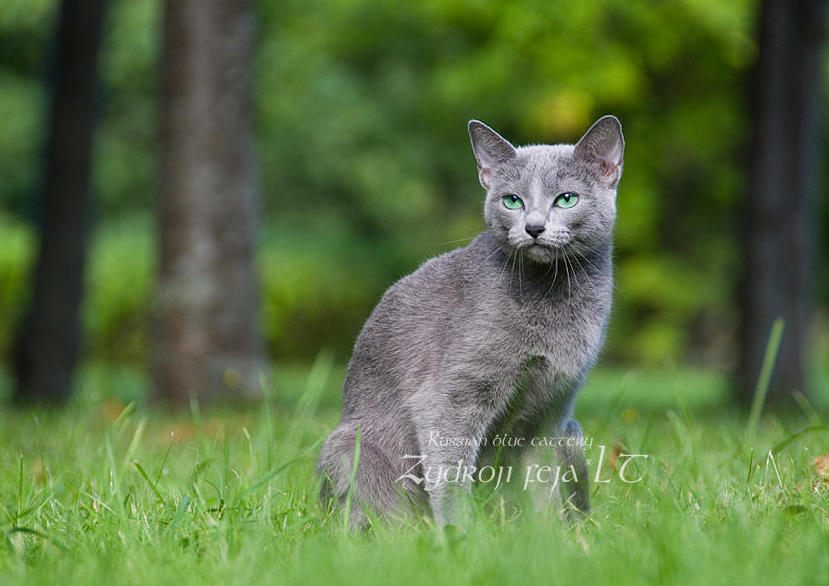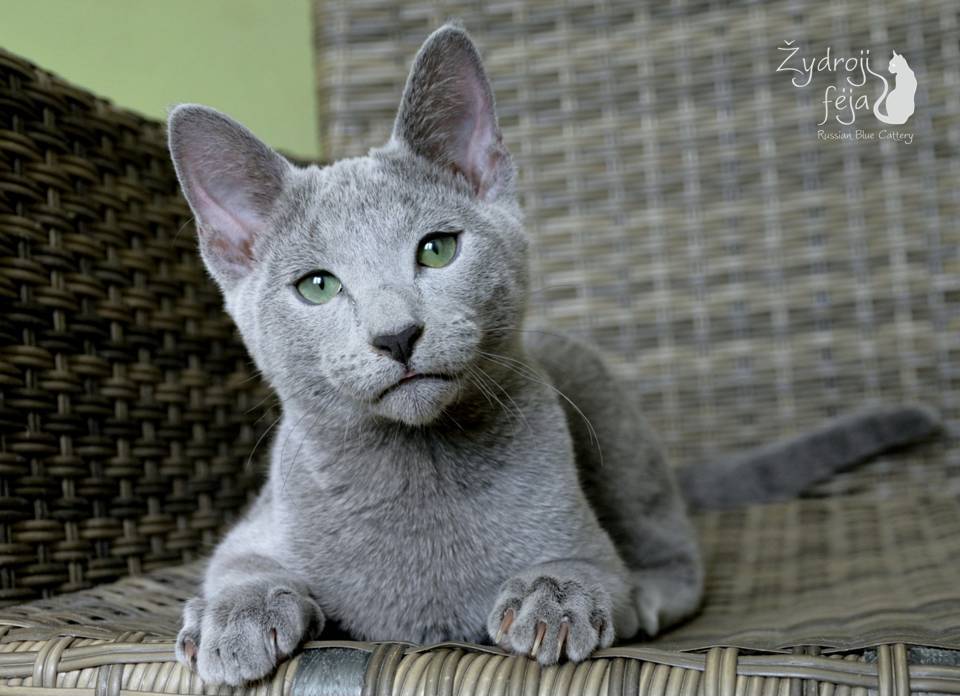
Russian Blue cat
History
According to various fables, formerly all the wealthy merchants were growing Russian Blue cats in their home. The daughter of Peter I Elizabeth I got so annoyed of mice rush that she ordered to find the members of all breeds which were able to catch mice. In this way, for being perfect hunters, Russian Blue cats came and remained in the royal palace. Russian Blue cat was brought to Europe by sailors who gave the cat to the Queen of Great Britain Elizabeth I as a present from the Russian empress Elizabeth II. Despite the fact, that the cats were very distinctive, graceful, elegant, great hunters and quite prevalent, they started to wane gradually. If a group of English breeders had not been producing the population of Russian Blues, probably this breed would have been died away. Since the mother country of these cats is Northern Russia, it is true to say that they are conformed to northern climate.
Appearance
Contemporary Russian Blue has changed very little from the former one. Its fur remained soft, thick, medley of bluish colour. The coat is equal in length with the undercoat that is why it is often called as “plush”. A lot of other breeds have the bluish tone of the fur but the Russian Blue is the only one which hair has silver tips. The coat is very soft so that to caress it is endlessly pleasant.
The body is of a medium length, graceful, muscular but elegant. The skull is flat, jaw is narrow. Side-view: forehead and nose are straight. Firm chin and nose make vertical line. Long, slender neck. Nature gifted them with big, taper, along the head wide ears, which edges are very thin. The Russian Blue cat’s nose tip is grey, ash coloured, and the eyes are big, which have the shape of almond, bright green emerald coloured. Kittens bear having blue eyes. Later they develop and change the colour. Legs are long and elegant of which back ones are a bit longer than the fore ones, paws are little and oval. The tale has a big importance which is long and taper. The fracture of the tail is considered as genetic spoilage.

Temperament
The Blue Russian cat is characterized as having an idiosyncratic temper. The cat is gentle, restrained, affectionate, flexible to the environment, fond of peace and comfort. The Blue Russian loathes quarrels. She is exceedingly playful, impish, bouncy, able to perform even acrobatic tricks. It is no wonder if after laying down calmly she starts to frolic. If she chooses you as her owner, you will not get enough of her loveliness and loyalty. If the cat of this breed is treated appropriately and feels beloved, she will obey you and will become a real friend. Being wounded she will lose trust and feel disappointed evermore. The Russian Blue is a tender cat which feels the emotional state of an owner and which manages to comfort. There is a very strong relationship with depressive people.
Nurture
The Russian Blue does not like quarrel. The best way is to start nurturing from the early years. It is forbidden to punch the cats with hand. You will offend its self-esteem, pride and will lose the trust. If a cat behaves improperly, the right way is to warn her with a loud “no”, and after scolding to put her in another room and ignore for awhile. It is forbidden to play with hands and to stretch the cat. Our hands have to remind softness but not become a toy. While playing with hands, we learn them to scratch. Buy whisks, mice, balls to play with. It is possible to teach this breed simple tricks like to bring a toy or to catch it in the air. They are very bouncy, therefore are able to jump up to one meter high.

© Copyright by Eleonora Kasparavičienė
Breeder of Russian Blue cats
Cattery „Zydroji Feja“
www.zydrojifeja.lt
Standarts of Russian blue breed in WCF
Scale of points:
Body - 25 points
Head - 30 points
Eyes - 10 points
Coat texture - 20 points
Coat colour and Tipping - 10 points
Condition - 5 points

Body
The medium sized, slightly elongated cat has a medium solid, muscular body with graceful stature and overall impression. The legs are long and slender, the paws are narrow and oval. The tail is long and ends in a slightly rounded tip.
Head
Eyes
Procedures for granting awards of WCF
CH (Champion)
Animals participate in open class from 10 months old. The title is confirmed upon receipt of three CAC titles from three different judges. The title may get in the same country.
ICH (International Champion)
The title is confirmed upon receipt of three CACIB titles from three different judges in two different countries.
GICH (Grand International Champion)
The title is confirmed upon receipt of three CAGCIB titles from three different judges, in two different countries.
ECH (European Champion)
The title is confirmed upon receipt of three CACE from three different judges in three different countries.
GECH (Grand European Champion)
The title is confirmed upon receipt of three CAGCE titles from three different judges in three different countries.
WCH (World Champion)
The title is confirmed upon receipt of three CACM titles from three different judges in three different countries, one of which must be in a different continent.
Titles given to animals which are castrated or sterilized
CAP (Premior)
Animals participate in open class from 10 months old. The title is confirmed upon receipt of three CAP titles from three different judges. The title may get in the same country.
CAPIB (International Premior)
The title is confirmed upon receipt of three CAPIB titles from three different judges in two different countries.
CAGPIB (Grand International Premior)
The title is confirmed upon receipt of three CAGPIB titles from three different judges, in two different countries.
CAPE (European Premior)
The title is confirmed upon receipt of three 3 CAPE from three different judges in three different countries.
CAGPE (Grand European Premior)
The title is confirmed upon receipt of three CAGPE titles from three different judges in three different countries.
CAPM (World Premior)
The title is confirmed upon receipt of three CAPM titles from three different judges in three different countries, one of which must be in a different continent.








